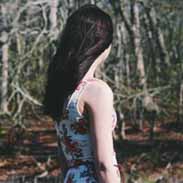Mozart’s Instrumental Music 2C – Flashcards
Unlock all answers in this set
Unlock answersquestion
State the birth and death dates of Mozart, birth place, childhood, tours, exposure to music, work as violinit/organist, life in Vienna, death.
answer
Mozart's Life (1756-1791) Born in Salzburg, Austria, Wolfgang Amadeus Mozart showed extraordinary musical talent in early childhood. With his father Leopold, a composer and well-known violin teacher, the young Mozart undertook two long tours around the major capitals of Europe and main cities in Italy. Consequently, already at an early age Mozart had a chance to absorb a wealth of musical styles. In the 1770s, Mozart worked as violinist and organist for the Archbishop of his native Salzburg, a position that brought him little respect and risible compensation. After several disagreements with his employer, Mozart left for Vienna in 1781, where he made a living as a freelance musician and teacher. He died there a poor man.
question
Discuss Mozart symphonies. Give examples of three symphonies.
answer
Mozart wrote 41 symphonies, most of them during his youthful travels around Europe and his time as an employee of the Archbishop of Salzburg. "Little" G-Minor Symphony: Symphony No. 25 (K. 183), Mozart's first in a minor key, called "Little" to distinguish it from the later, longer Symphony No. 40 in G Minor (K. 550).
question
When were Mozart's Final six symphonies written and what did they represent?
answer
Mozart composed his final six symphonies in Vienna between 1782 and 1788. Together with Haydn's late symphonies, they represent the culmination of the Viennese symphonic style.
question
What were the three Mozart symphonies that represent the Vienese style?
answer
"Prague" Symphony: Symphony No. 38 in D major (K. 504), written in 1786 for a performance in Prague. Symphony No. 40 in G Minor: sometimes called the "Great" G- Minor Symphony (K. 550) it was written in 1788, likely for one of Mozart's subscription concerts in Vienna. (in book) "Jupiter" Symphony: Symphony No. 41 in C Major (K. 551), it was written in 1788 Perhaps for a performance at Mozart's subscription concerts in Vienna. Fino a Qui
question
What was Mozart's apprach toward orchestration? Include three details
answer
Mozart took great pains with orchestration. The winds in particular are always carefully "voiced" and rarely simply double the string parts. Mozart's colorful writing for winds formed the basis for Haydn's London Symphonies as well as those composed by Schubert and Beethoven.
question
Discuss the finale of the Jupiter Symphony as a musical innovation.
answer
The finale of the "Jupiter" Symphony contains one of the greatest technical tour de force in the history of music: the five themes presented in the exposition of this sonata-form movement all come back in the coda in quintuple invertible counterpoint. https://www.youtube.com/watch?v=wM4zuCgBIOI
question
What chamber music genres were written by Mozart?
answer
Mozart wrote divertimenti and serenades for all sorts of public entertainments, some two dozen string quartets, as well as several quintets. "Haydn" Quartets: Mozart's set of six string quartets dedicated to Haydn, the father of the genre. Mozart began composing this collection shortly after his arrival in Vienna, where he had a chance to study Haydn's influential Opus 33 quartets.
question
Discuss the "Haydn" Quartets
answer
"Haydn" Quartets: Mozart's set of six string quartets dedicated to Haydn, the father of the genre. Mozart began composing this collection shortly after his arrival in Vienna, where he had a chance to study Haydn's influential Opus 33 quartets.
question
Discuss the "Dissonance" Quartet
answer
"Dissonance" Quartet: the last of the "Haydn" Quartets, it derives its title from the slow introduction to the first movement (a section with a dissonant character). https://www.youtube.com/watch?v=6Zcy-zs9jmw
question
How many sonata were written by Mozart for solo piano, piano and violin? Describe the sonatas.
answer
Mozart wrote 18 sonatas for solo piano and 28 sonatas for piano and violin. Throughout the 18th century, most sonatas were directed towards amateur performers, many of them women. Mozart too wrote easy sonatas, characterized by tuneful, symmetrical melodies and simple accompaniment patterns for the left hand.
question
Discuss the significance of Turkish music for Mozart.
answer
Turkish music was introduced into European music in the 18th century during the Turkish Wars. Like other contemporary and later composers, Mozart sometimes imitated the sounds of Turkish military music in his compositions.
question
Discuss the history of the piano with regard to Mozart.
answer
Mozart began to play the piano, as opposed to the harpsichord, during the 1770s. In 1783 he purchased a piano by the Viennese maker Anton Walter. To this piano he later added a pedal board that allowed him to extend and reinforce the lower register.
question
What was the purpose of Mozart's piano concertos and what did they feature?
answer
Mozart fashioned his 23 piano concertos for himself and his best students to play in public. Mozart's piano concertos feature: Three movements (fast/slow/fast) Musical "dialogues" between the orchestra and the soloist The new concerto-sonata form for the first movements
question
What is the other name for Concert-sonata form and what are the two types of expositions. Draw a diagram.
answer
Concerto-sonata form: also referred to as "double exposition" form, it consists of two different types of expositions: Orchestral ("passive") exposition, entirely in the tonic key presented by the orchestra Solo ("active") exposition by the soloist and orchestra that provides the modulation to the secondary key area



